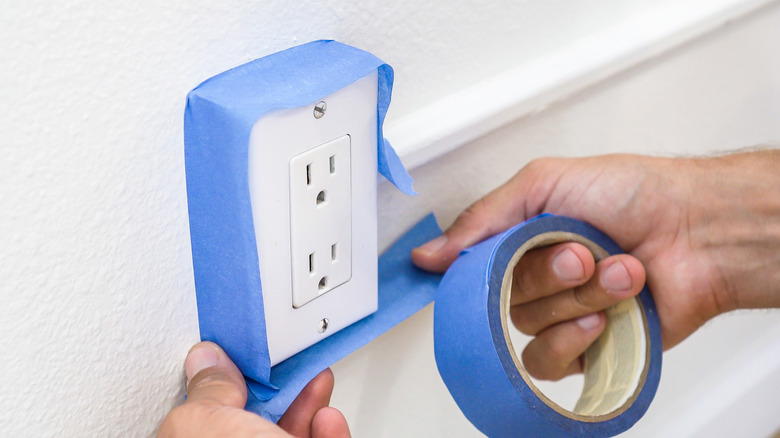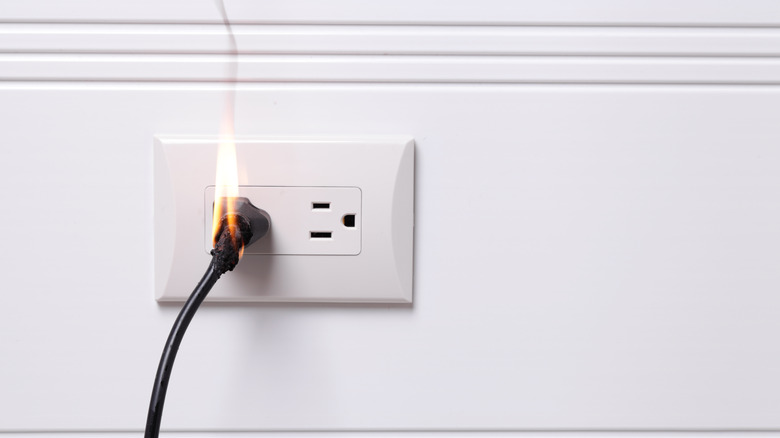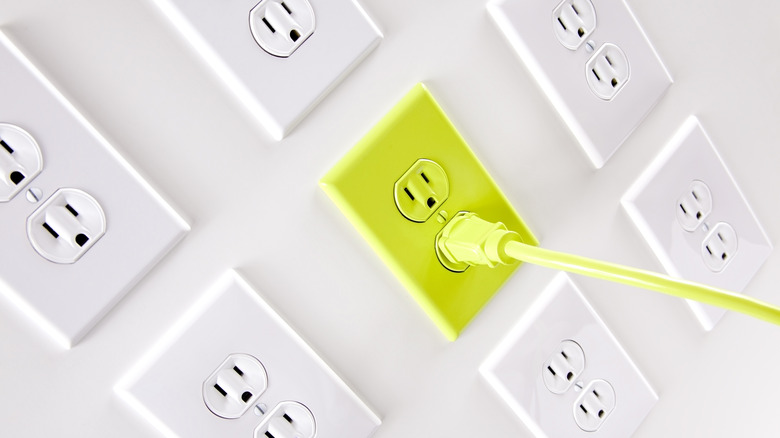Can You Paint Electrical Outlets?
It's a common practice to cover the electrical outlets lining your walls before you begin painting a room in order to avoid splatters and other unsightly mistakes. A standard white outlet cover visually pops against a dark-colored wall, but you may want to swap your basic plates for a color or design that's more eye-catching or better follows the theme of your home's interior. When starting such a simple DIY project, the first tool that usually comes to mind is paint. However, before you head to the hardware store and select your favorite matte or high-gloss acrylic paint color, consider the dangers of using the substance around such sensitive and highly-flammable parts of your home. Painting the electrical outlets around your house is certainly a feasible solution to spruce up your walls, but electricians and other knowledgeable professionals don't recommend the action.
This doesn't mean that the outlets around your home have to remain white indefinitely. There's another creative way to spruce up your electrical outlet plates that won't put your home's safety at risk. Let's learn why painting electrical outlets is considered unsafe and explore a possible alternative to paint that can still bring life to your basic white covers.
Why painting electrical outlets is unsafe
Painting the covers of your electrical outlets isn't inherently dangerous. The problem lies in whether or not paint accidentally finds its way into your outlet's receptacles since doing so can result in harmful damage to the electrical wiring and to the residents of your home. A majority of paints are electrically conductive, meaning they allow electricity to pass through once applied to a surface. Sloppily painting your outlets could cause your wires to short circuit upon usage and, in the worst cases, may start an electrical fire. Painting your electrical outlets may also make plugging in devices more difficult since the paint can prevent the prongs from fitting seamlessly into their sockets.
You might decide to paint the outlet cover plates, but take several precautions before doing so. Never attempt to paint the covers while they're still screwed onto your walls. Unscrew the plate from the wall and allow the paint to fully dry before screwing the cover back into place. Use non-conductive paint to keep the outlet from sparking and causing future complications with your plugs. And most importantly, avoid getting paint on or inside any receptacles at all costs. If you want to change the color of your outlets, which are the parts of the wall fixture that your electrical cords plug into, it's best to completely replace your existing outlets with new, pre-colored ones.
Safer alternative to paint
The simplest alternative to painting your outlets is to replace the white cover with a decorative substitute. Decorative plate covers are available online and inside various home improvement stores at affordable prices. To do so, grab a flathead screwdriver and unscrew the screw holding your current plate to the wall until it's loose enough to remove. A standard duplex outlet should have one screw in the center of the plate. Next, place the screw that held the original plate to the wall into the new plate, and screw the new plate into place. You can also replace covers designed for light switches, television cables, USB ports, and other popular devices.
Wall plates are often found in three sizes: standard, midsized, and jumbo. Standard covers are the most common size found inside today's homes, but those wanting to cover an unsightly imperfection in their home's drywall can opt for a larger size without interfering with the plate's fit around the outlet. Wall plates are manufactured using a variety of different materials and finishes. While many are made from plastic, you can find some covers made of wood, metal, stainless steel, ceramic, brass, and even bamboo. And just like the paint available for purchase at the store, outlet covers come in matte and glossy styles, as well as other unique textures.


